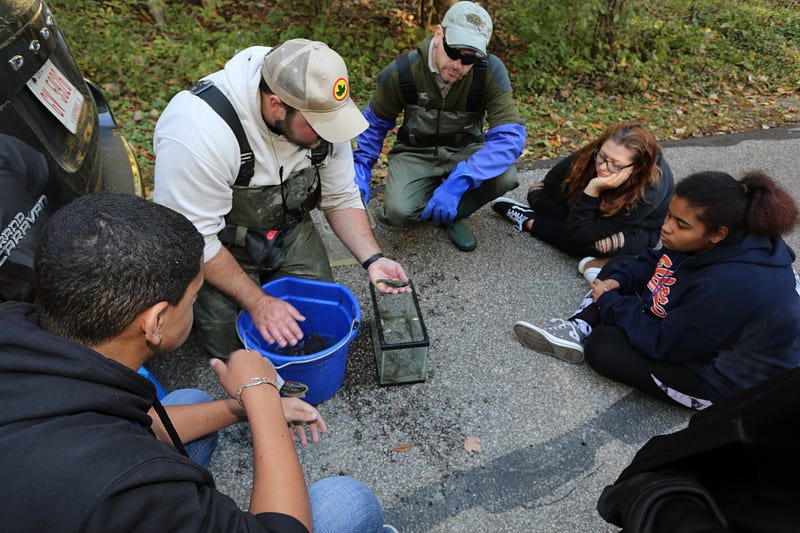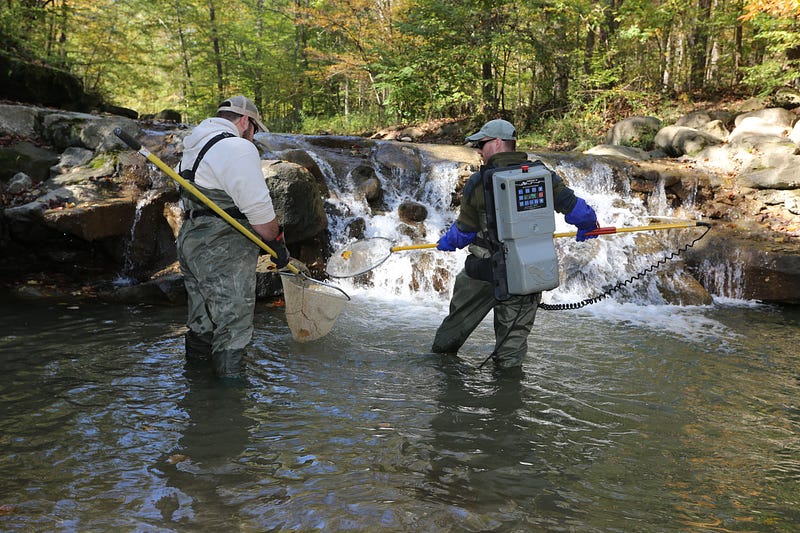Mike Johnson, Chief of Conservation

The year was 1996 and I was working for an environmental consulting firm as an aquatic ecologist. My company sent me to New Orleans for an international conference on water quality. I was there to drum up business, but decided I had time to go to a workshop on biocriteria. I was just becoming familiar with Ohio’s procedures for using fish and aquatic insects to quantify water quality in our streams and rivers and thought I might learn something new. However, I was surprised I already knew more than many people in the room! This was because our Ohio EPA was a leading developer of new biocriteria techniques that were just beginning to spread to other states.
So, what is biocriteria? Basically, it is an expansion of the definition of water quality to include fish and aquatic wildlife. There was a time when water quality was only measured in a lab — evaluated by what was in the water itself without considering the health of the living things in it. If water was safe to drink, it was considered good. Although we still use laboratory testing for drinking water, the concept of good water quality has been expanded to include “drinkable, fishable and swimmable.” The wildlife that lives in rivers and streams helps us determine what is good. Fish are like canaries in a coal mine: if the fish are healthy, then the water is probably of good quality.
Ohio EPA developed the techniques we use today to measure water quality, even changing state law and legal definitions to include fish, aquatic insects and habitat. Fish are sampled using a mild electric shock, which is considered safer than using nets. Temporarily stunned fish are collected, sorted, recorded and then released. The data is run through an index called the Index of Biotic Integrity (IBI). The index considers factors such as the diversity of species, number of species that are tolerant of pollution, number of insectivores versus omnivores, trophic (or nutrition) levels and percent of fish with DELT (deformities, eroded fins, lesions and tumors) anomalies. The index calculates a single numerical score that is compared to regional ecological standards.

At Summit Metro Parks, we use these same tools to help us restore habitats that have been physically degraded. As part of our river restoration project at the Valley View Area of Cascade Valley Metro Park in Akron, we sampled the fish to determine the pre-construction condition of the water. This data will be compared to new data taken from the river when restoration work is complete. The goal is to improve IBI scores by creating better instream habitat. We take the time to do this work because what is good for fish is ultimately good for the thousands of people that eventually drink the water from our Cuyahoga River.
Over the years, we have been fortunate to receive many grants to protect and restore our water resources. Water Resource Restoration Program (WRRSP), Clean Ohio Conservation Fund, Ohio EPA Section 319 and private mitigation dollars have been utilized to protect and restore thousands of acres of wetlands and miles of stream corridors.
For more great stories like this, check out Green Islands Magazine, a bi-monthly publication from Summit Metro Parks. Summit County residents can sign up to receive the publication at home free of charge.